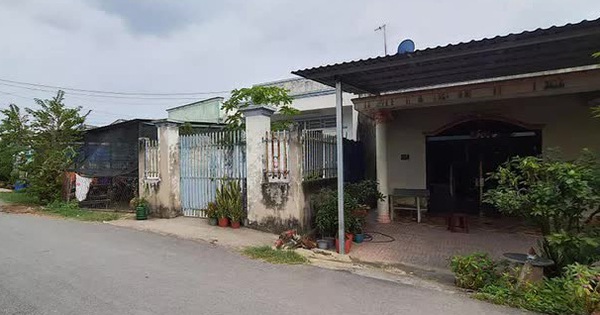Recently, there have been many cases of exchanging red books, selling houses and land with fake red books. I am about to buy land, feel very confused, do not know what to do to avoid. (Written Tuan)
What agencies can I go to, what to bring, who to meet and how to do the procedures to know if the red book of the land I am about to buy is real or fake?
In addition, before the transaction, I should note what issues related to the land I am buying to avoid being scammed. Please advise me.
Advisory lawyer
To determine whether the certificate of land use rights, ownership of houses and other land-attached assets (red book) is real or fake, you can do one of the following:
Method 1: Check the information and parameters on the red book yourself
The paper form and content are specified in Circular 23/2014/TT-BTNMT dated May 19, 2014 providing for certificates of land use rights, ownership of houses and other land-attached assets.
Persons wishing to check the Certificate can compare and contrast with the provisions of the above-mentioned law to determine whether the Certificate is properly presented in accordance with the provisions of the law or not.
In particular, you can check for authenticity based on the barcode printed at the bottom of page 4 of the Certificate as follows:
Barcodes are used to manage and look up information about the Certificate and the application for the Certificate; barcode content represents a sequence of positive integers, structured in the form MV = MX.MN.ST, where:
– MX is the code of the commune-level administrative unit where the land parcel is located, shown according to the Prime Minister’s decision on the list and codes of administrative units of Vietnam; In case the Certificate is issued for a land plot located in more than one commune-level administrative unit, the code of the commune with the largest area shall be recorded; In case the district-level does not have a commune-level administrative unit, the code of the commune-level administrative unit (MX) shall be replaced by the code of the district-level administrative unit according to the Prime Minister’s decision on the list and codes of the district-level administrative units. Vietnamese administrative unit.
In case the Certificate is issued under the authority of the People’s Committee of the province, the code of the province or centrally run city as prescribed shall be added in front of the code of the commune, ward or township where the land is located or before the code of the application. district-level administrative units where land is available, for districts that do not have commune-level administrative units;
In case the Certificate is issued under the authority of the People’s Committee of the province, the code of the province or city directly under the Central Government shall be added in front of the code of the commune, ward or township where the land is located;
– MN is the code of the year of issuance of the Certificate, including the last two digits of the year of signing and issuing the Certificate;
– ST is the ordinal number of the land registration procedure file corresponding to the Certificate issued for the first time according to the regulations on cadastral records of the Ministry of Natural Resources and Environment.

Red books, household registration books and other types of fake degrees in the line of forging documents, dismantled by Da Nang Police in June 2020. Image:Nguyen Dong
However, you should note that, because this is a visual test, the accuracy rate is not high. Therefore, the person wishing to check the Certificate should check the information at the Land Registry Office in the following way:
Method 2: Check at the Certificate Authority – recorded in the red book:
– For localities that have established land registration offices, the Department of Natural Resources and Environment shall issue certificates of land use rights and ownership of houses and other land-attached assets…
– For localities that have not yet established a land registration office:
+ The Department of Natural Resources and Environment issues certificates of land use rights and ownership of houses and other land-attached assets to religious organizations and establishments; overseas Vietnamese to implement investment projects; foreign organizations and individuals; foreign-invested enterprises;
+ District-level People’s Committees grant certificates of land use rights and ownership of houses and other land-attached assets to households, individuals, residential communities, and overseas Vietnamese. housing associated with residential land use rights in Vietnam.
Red book verification procedures are carried out as follows:
Step 1: Submit the request form
Individuals wishing to verify must submit a request form using Form No. 01/PYC (Attached to Circular No. 34/2014/TT-BTNMT dated June 30, 2014 on regulations on construction, management and operation of information systems). land information) in one of the following ways:
– Submit directly at the branch of the land registration office in the district, town, provincial city.
– Sending through post office.
– Send by email or through the land portal.
Step 2: Receive and process the request
– The agency providing land data shall receive, process and notify financial obligations to the requester. In case of refusal to provide data, it must clearly state the reason and reply to the organization or individual.
– After households and individuals fulfill their financial obligations, the land data-providing agency shall provide land data upon request.
Step 3: Return the result
Implementation deadline: If the request is received before 15:00, it must be provided within the same day; In case the request is received after 15 hours, the provision of land data is made on the next working day.
The notary office does not have the function of verifying whether it is fake or real. However, the notary office is an organization that validates the legality of documents and will not notarize contracts and papers that violate the law.
Thus, to avoid being scammed by a fake red book, you should verify the information about the land plot and its owner in the above ways before signing a purchase and sale contract and delivering money.
Lawyer Pham Thanh Binh
Bao Ngoc Law Firm, Hanoi
at Blogtuan.info – Source: vnexpress.net – Read the original article here



